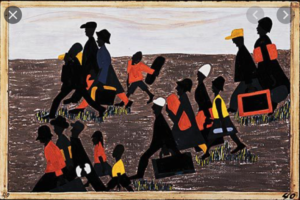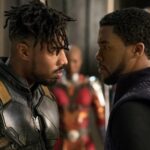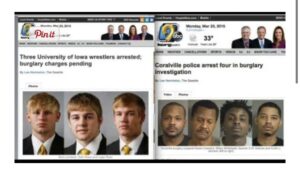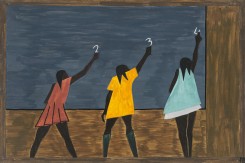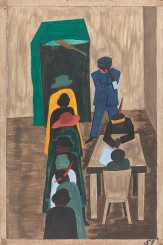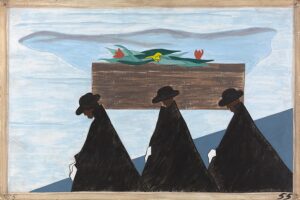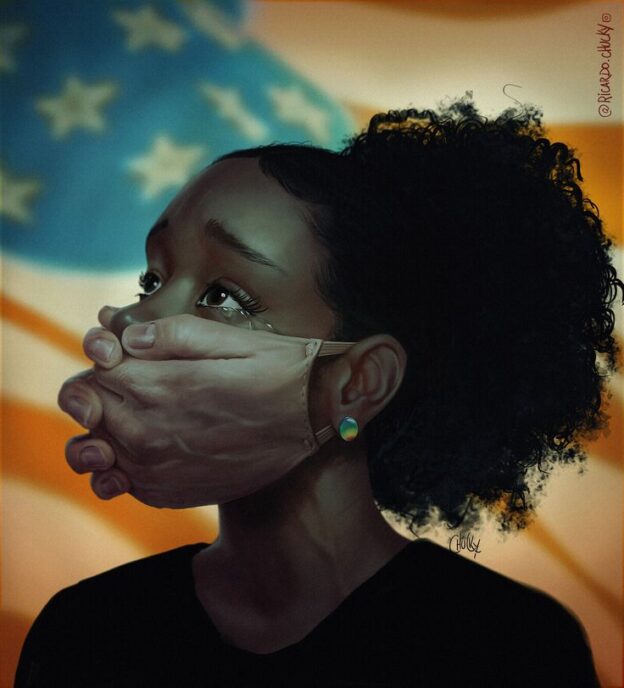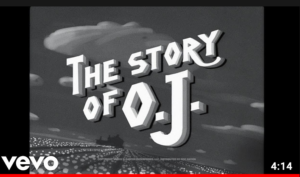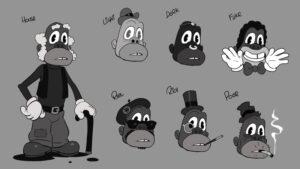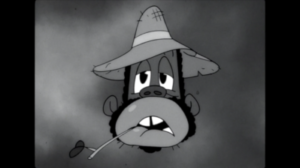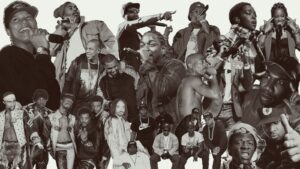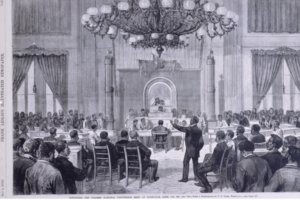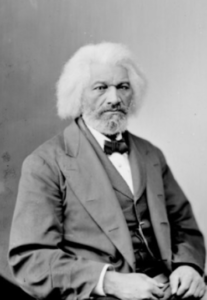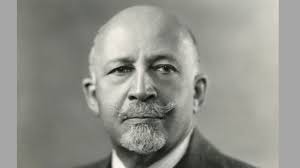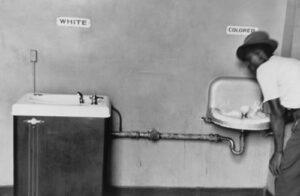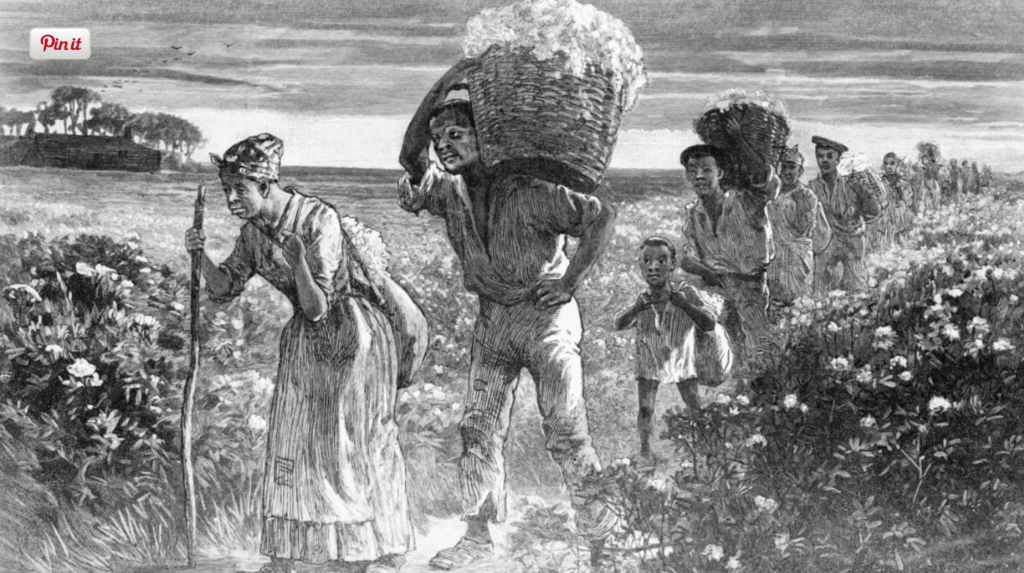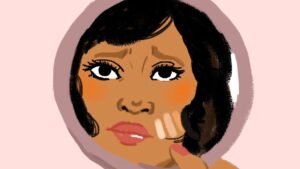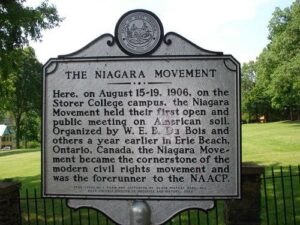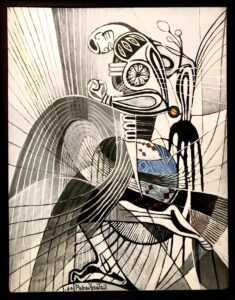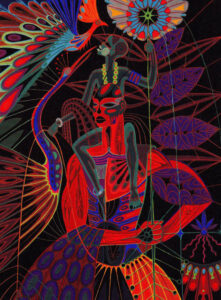The Afrocentricity Perspective
In modern American education, the lens in which black history, stories, and power is believed to be taught through a white perspective, in which this perspective should be accused in contributing to suppressing black truths and narratives. An article written by historical figure, Molefi Kete Asante, “Afrocentricity”, explains this blind perspective in depth. He writes about how his method of Afrocentricity is a way to expand and challenge the ways in which American academies perceive black history, and encourages African Americans to “re-assert a sense of agency in order to achieve sanity”(Asante). In 1970, Asante wrote a whole book on this concept in which many people used to speak of the Afrocentric paradigm. As this method begins by asking a question to any given audience, “‘What would African people do if there were no white people’”(Asante)? This question stems from thinking about how learning about black history in this way makes black people feel as a “historically oppressed population”. “If we can, in the process of materializing our consciousness, claim space as agents of progressive change, then we can change our condition and change the world”(Asante).
To reinstate one part of Asantes idea, this method had me thinking and relating Afrocentricity to our education system today. In this aspect, I view this as essentially proposing the Afrocentric method in our American education, as a way of approaching black history in order to give black power in perspective. This idea came initially very big for me. I began questioning, how can education create more space for this? How can our educators educate themselves? I then began to review my own knowledge and where I stand in my own education. I grew up in a small, rich, white town with zero classmates or teachers of color. I am a white young woman myself who is aware of her fathers passive racism and realized this just in the past few years of my life. How does this stand in my way now of wanting and whole-heartedly believing in equality and working towards becoming a helpful ally? Did I even know what black power meant? Could I speak about black power? In Manning Marbles and Leith Mullings book, “Let Nobody Turn Us Around”, there is a section in which is titled, “Black Power”. This reading included a bio and writing from Stokely Carmichael, “What We Want”, which had several points of recognizing where our country was living in racism and what black people needed and wanted, even after the civil rights movement. One quote that I read over and over again was, “Black power can be clearly defined for those who do not attach the fears of white America to their questions about it”(Carmichael, 420). This to me, meant as a conscious black person, is to fear not the white America and to the conscious white person, was to stop living in the whiteness and join the black power. Another major aspect Carmichael speaks in is that whites need to point the finger at themselves. Do not address these problems such as oppression and racism to or with people of color, address it within you and the historical support whites have given to encourage racism. As his work relates to my question of how our education has been shaped, and adding the way our minds were molded, he writes something so powerful. “In the books that children read, whites are always ‘good’ (good symbols are white). Blacks are ‘evil’ or seen as savages in movies, their language is referred to as a ‘dialect’, and black people in this country are supposedly descended from savages”(Carmichael, 425). After reading this, I felt my heart sink, as I have read those books and seen those movies as a child, and still catch glimpses now. I was naive and ignorant to not have not thought of this until this point in my life. My question for myself now stands at, what books can teach me more? What and where are my resources beyond this course?
An idea that carries from Carmichaels writing into another piece of work, is the idea that white people have historically made black people feel intimidated. This idea as it applies to the 20th century, has since shifted due to the space, climate, and power created by black people, for black people. Austin Channing Brown is a black author, known for her book, “I’m Still Here”, and I purchased this book in March 2020, in search to further my education, allyship, and know my place as a young white woman. Austin being an identifying woman herself, she includes the story of why her mother gave her a stereotyped white, male name in modern American society. Her mother wanted her to apply to any job she wanted and when that person received her resume, they consciously or subconsciously would be drawn to a white man’s name. How can there be so much power in a name? What created this perspective? Austin continues to describe the opportunities she did or did not have as a black young girl. The example that is related to the thesis on perspective, specifically in a school environment, was Austin was one of two black girls in her class. She and the girl would sit next to each other and as young girls do, they would chat. One day their teacher, who was white, separated them in creating assigned seating. When the teacher noticed the girls became less engaged, uncomfortable, and quiet, realized what separating them had done. As Austin writes, in a dramatic way, the teacher vowed to never make assigned seats again while becoming aware of the comfort the girls brought to each other. This example represents the blindness white people experience whether they are trying to or not. Her teacher pointed the finger at herself.
In introducing Molefi Kete Asante as a historical figure, among many other important figures, this was also a combination of my thoughts and journals from this past semester. Learning, reading, and discussing several brilliant pieces of work by black authors and writers was an engaging and educated way for me to continue to learn about different perspectives and black lives throughout time. My additional aspect to this project will be a picture of girl students in line at one of the first schools to desegregate after Brown vs Board, Barnard Elementary School in Washington, D.C. I chose to implement this photo into my project because my ideas stemmed from my passion for schools and education not getting enough focus, good and bad. As I hope to work in schools after I graduate, my goal is to get involved in the way we educate and what we educate on which of course, includes black studies.

 Barnard Elementary School
Barnard Elementary School
source: Library of Congress
Works Cited
Asante, Molefi Kete. “Afrocentricity.” Dr. Molefi Kete Asante, 13 Apr. 2009, www.asante.net/articles/1/afrocentricity/.
BROWN, AUSTIN CHANNING. I’M STILL HERE: Black Dignity in a World Made for Whiteness. VIRAGO PRESS LTD, 2021.
Carmichael, Stokely. “Black Power.” Let Nobody Turn Us around: Voices of Resistance, Reform, and Renewal: an African American Anthology, by Manning Marable and Leith Mullings, Rowman & Littlefield, 2009, pp. 418–434.

